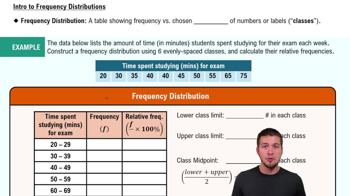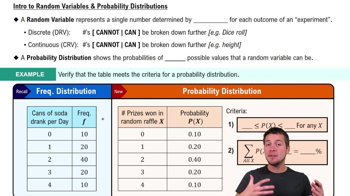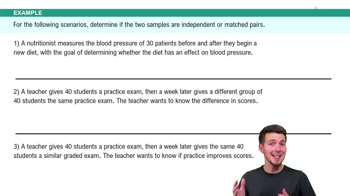Here are the essential concepts you must grasp in order to answer the question correctly.
Double-Blind Study
A double-blind study is a research design where neither the participants nor the researchers know who is receiving the treatment or the placebo. This method helps eliminate bias in the results, as it prevents expectations from influencing the participants' responses and the researchers' assessments. In the context of the acne cream experiment, both the girls and the individuals administering the treatment should be unaware of which group receives the actual cream and which receives the placebo.
Recommended video:
Intro to Frequency Distributions
Random Assignment
Random assignment is a technique used in experiments to ensure that each participant has an equal chance of being placed in any group. This process helps to control for confounding variables and ensures that the groups are comparable at the start of the experiment. In the acne cream study, random assignment of the 500 girls into the treatment and placebo groups is crucial for the validity of the results.
Recommended video:
Intro to Random Variables & Probability Distributions
Placebo Effect
The placebo effect occurs when participants experience a perceived improvement in their condition due to their belief in the treatment, rather than the treatment itself. This psychological phenomenon can significantly impact the outcomes of clinical trials. In the acne cream study, using a placebo that looks identical to the actual cream helps to control for the placebo effect, allowing researchers to more accurately assess the true effectiveness of the acne treatment.
Recommended video:
Introduction to Matched Pairs Example 1






